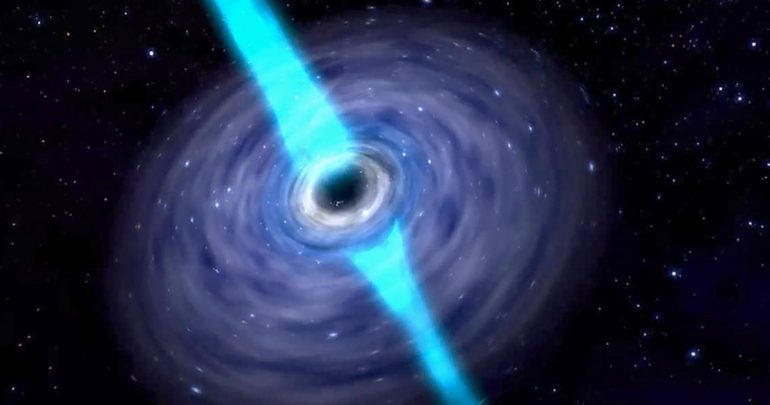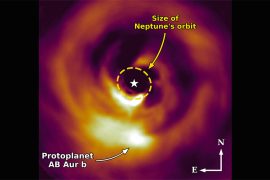Cosmic Element Forge: Stellar black holes may be long-sought formation sites for gold and other heavy elements. Because the accretion disk around these holes contains enough high-energy free neutrons to generate these elements through rapid neutron capture, a model simulation now shows. Candidates for such cosmic gold factories are therefore black holes from neutron star collisions, but also from hypernovae.
Almost all the elements in the periodic table did not emerge until after the Big Bang – with the formation of the first stars in the universe. It wasn’t until the nuclear fusion inside hydrogen and helium melted into larger atoms, including iron. On the other hand, the process of neutron capture is necessary even for heavy elements. The free neutrons collide with the atom, sometimes converting into protons to form a new element.

Where are the rest of the element factories?
Common to gold, platinum, uranium and other particularly heavy elements, slow neutron capture but not closed. They can only arise when free neutrons have a certain minimum energy – as they are released, among other things, in the collision of neutron stars. Astronomers were successful in such a collision for the first time in 2017. first track Gold & Co. To Prove, 2019 it was confirmed with a more detailed analysis.
However, there are too few neutron star collisions in the universe to explain the full amount of heavy elements in the universe. For example, gold f. comesfive times more In our galaxy it should only occur with this mode of formation, as the researchers calculated in 2020. So they suspected that even extremely high-energy hypernova A collapsing neutron star and the resulting black hole cause rapid neutron capture.
black hole in sight
Oliver Just from the GSI Helmholtz Center for Heavy Ion Research in Darmstadt and his colleagues have now determined which black holes can be regarded as element factories and how their accretion disks should be designed. “In our study, we systematically investigated the conversion rates of neutrons and protons for a large number of disk configurations using complex computer simulations,” Just explains.
Result: In fact, the accretion disks of some black holes have good conditions for the formation of the heaviest elements through rapid neutron capture. Because they contain fast enough neutrons that can collide with atoms and form new elements, the researchers report.
Disk mass is important
However, there are also restrictions: “What is decisive is the total mass of the plank. The more massive the disk, the more often neutrons are formed from protons by capturing electrons and emitting neutrinos and thus are available for synthesis of heavier elements using the R-process,” Just explains. But if the disk becomes too heavy, it is reversed and more neutrons are converted into protons. Then neutron capture would not have a sufficient supply. The team found that the optimal disc mass for element factories is about 0.01 to 0.1 solar masses.
This confirms that black holes arising after neutron star collisions may indeed be good “factories” for gold, platinum and the like. Because, according to Just and his colleagues, many of them have accretion disks this massive. But hypernovae to black holes are also theoretically possible – star explosions in which a star first becomes a neutron star and then collapses due to the uptake of matter into the black hole. However, as the researchers report, the flow of matter should be relatively high.
many questions still unanswered
So black holes and their accretion disks may be the places in the universe where the heaviest elements arose and continue to be produced. Modeling by Just and his team has now helped shed light on at least some of the characteristics and requirements of such element factories. However, as the researchers also emphasize, the search for the locations of rapid neutron capture is only the beginning and there are still many unanswered questions. (Monthly Notices of the Royal Astronomical Society, 2021; doi: 10.1093 / manras / stab 2861,
Source: GSI Helmholtz Center for Heavy Ion Research

Internet fan. Alcohol expert. Beer ninja. Organizer. Certified tv specialist. Explorer. Social media nerd.





